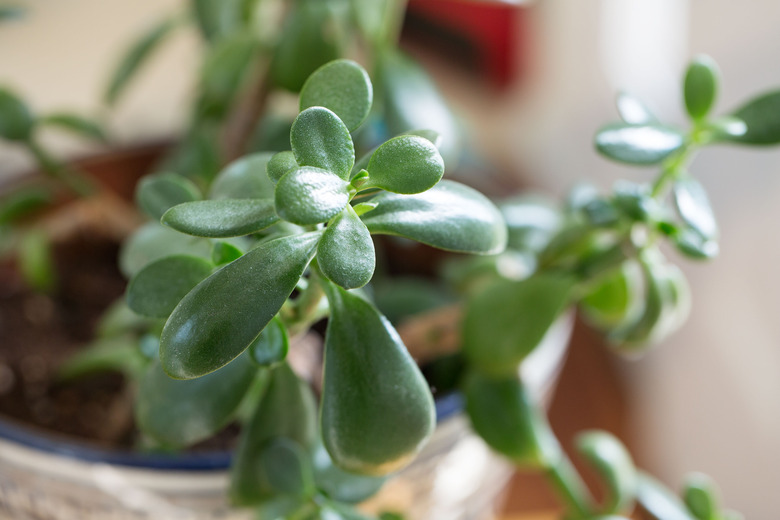Repotting Jade Plants
We may receive a commission on purchases made from links.
Repotting jade plants gives the root ball a little extra space to grow and thrive. Depending on species, evergreen jade plants (Crassula spp.) grow outdoors year-round in U.S. Department of Agriculture plant hardiness zones 9 through 12, but you can grow them as indoor plants anywhere. Jade plants can go years without repotting. Move a jade plant to a new container only if the plant becomes top-heavy or begins to lift out of its old pot.
Preparation for Repotting Jade Plants
Preparation for Repotting Jade Plants
For young plants, repotting jade plants every two to three years is ideal to help with growth. For older plants, repotting only needs to happen every four or five years in most cases. The ideal time for repotting jade plants is in the early spring months just before or as new growth is starting.
Jade plants prefer a tight-fitting pot, so choose a new container only slightly wider than the diameter of the root ball. Look for a pot that's only about 2 inches wider than the root ball to avoid getting too large of a container.
Larger plants need deep, heavy pots so they don't tip over from the weight of the jade plant, so heavy unglazed clay or ceramic pots work well. Select a new pot with at least one bottom drain hole so the soil can drain readily.
Before repotting jade plants, wash the pot in warm, soapy water. Soak it in a solution of 1 part bleach and 9 parts water for 30 minutes to disinfect it. Allow the pot to thoroughly air dry before adding soil.
Jade Plant Removal Tips
Jade Plant Removal Tips
Allowing the soil to dry out before repotting jade plants makes it easier to lift the large root ball out of the old container. Insert a narrow trowel between the soil and the sides of the pot to loosen it, and then turn the pot upside down and slide the jade plant out while supporting the soil with your other hand. After freeing the jade from the pot, brush and shake off as much old soil from the roots as possible.
Jade Root Trim
Jade Root Trim
Dead or damaged roots leave your jade plant susceptible to disease after repotting. Examine the roots closely for dead, brittle roots, mushy or rotten roots, or long roots that are completely circling the exterior of the root ball. Trim these off with disinfected pruning shears.
Disinfect shears by wiping the blades with a rag soaked in rubbing alcohol. Cut through encircling roots in one or two places so they don't constrict the interior roots. You can also trim back any overly long, weak roots so only a healthy root ball remains.
Pot It Up
Pot It Up
The crown of the jade plant, where the stems emerge from the root ball, should sit 1 to 2 inches beneath the rim of the new pot when repotting jade plants. Begin by filling the pot with soil to a depth that places the crown in the right position, and then fill in around the roots with more soil until the top of the roots are just below the soil surface.
Try to use the same type of soil that was in the previous pot, but fast-draining, loam-based potting mix, such as a general houseplant potting mix, will work. Water the soil just enough to moisten it and then allow it to dry out completely before you water again. Jade plants don't require any fertilizer for at least four months after repotting.
